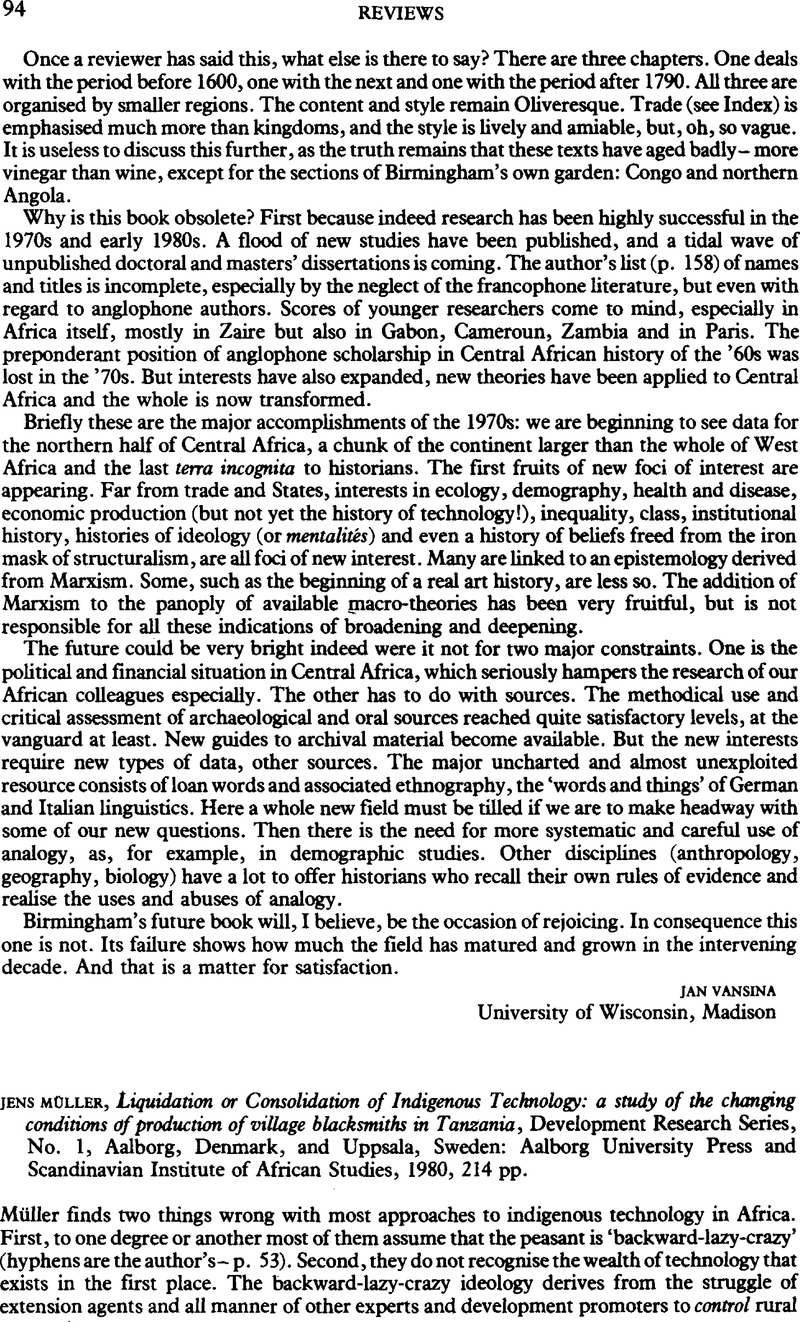No CrossRef data available.
Published online by Cambridge University Press: 07 December 2011

1 For instance, in the field of health: Wisner, B.. ‘Health and the geography of wholeness’, in Knight, G. and Newman, J. (eds.), Contemporary Africa, pp. 81–100, Englewood Cliffs, N.J.: Prentice-Hall, 1976Google Scholar; Feierman, S., ‘Change in African therapeutic systems’, Social Science and Medicine 13B, 4 (December 1979), pp. 277–84Google Scholar. In the field of crop production: Glaeser, B.. ‘Economic implications of ecological sustainability in the agricultural development of East Africa’, in Glaeser, B. (ed.), Vierteljahresberichte. Probleme der Entwicklungländer, Special Issue on Ecodevelopment, No. 70 (December 1977), pp. 305–16Google Scholar, Bonn and Bad Godesberg: Friedrich-Ebert Foundation Research Institute; Egger, K. and Glaeser, B., Politische Oekologie der Usambara-Berge in Tanzania, Bensheim: Kübel-Stiftung, 1975;Google Scholar O. Cardettini, Eléments d'une stratégie de I'écodéveloppement pour les villages ujamaa de Tanzanie, Cahiers de l'Ecodéveloppement, No. 3. Dissertation at the Centre International de Recherche sur l'Environnement et le Développement (54 Boulevard Raspail, Paris, France), 1975. In the field of crop protection: Wisner, B.et al., ‘Designing storage systems with villagers’, African Environment, Nos. 11–12, Vol. III, 3–4 (March 1979), pp. 85–95.Google Scholar
2 Shivji, I.. Class Struggles in Tanzania, Dar es Salaam: Tanzania Publishing House, 1975.Google Scholar
3 Although a few authors have come close, for instance: Coulson, A., ‘Agricultural policies in mainland Tanzania’, Review of African Political Economy, 10 (September–December 1977), pp. 74–100CrossRefGoogle Scholar;Raikes, P., ‘Rural differentiation and class-formation in Tanzania’, Journal of Peasant Studies 5, 3 (1977–1978), pp. 285–325CrossRefGoogle Scholar; Briggs, J., ‘Villagisation and the 1974–76 eeconomic crisis in Tanzania’, journal of Modern African Studies 17, 4 (1979), pp. 695–703CrossRefGoogle Scholar; Matango, R., ‘The role of agencies for rural development in Tanzania: a case study of the Lushoto Integrated Development Project’, in Coulson, A. (ed.), African Socialism in Practice, pp. 158–72, London: Spokesman, 1979.Google Scholar
4 Freyhold, M. von, Ujamaa Villages in Tanzania, London: Heinemann, 1979Google Scholar; Hyden, G., Beyond Ujamaa in Tanzania, Berkeley: University of California Press, 1980Google Scholar; Samoff, J., ‘Crises and socialism in Tanzania’, Journal of Modern African Studies 19, 2 (1981), pp. 279–306.CrossRefGoogle Scholar
5 For a remarkably similar view of the present crisis of ‘appropriate technology’ in Africa see: Ndongko, W. and Anyang, S., ‘The concept of “appropriate technology”: an appraisal from the Third World’, Monthly Review 32, 9 (February 1981), pp. 35–43.CrossRefGoogle Scholar